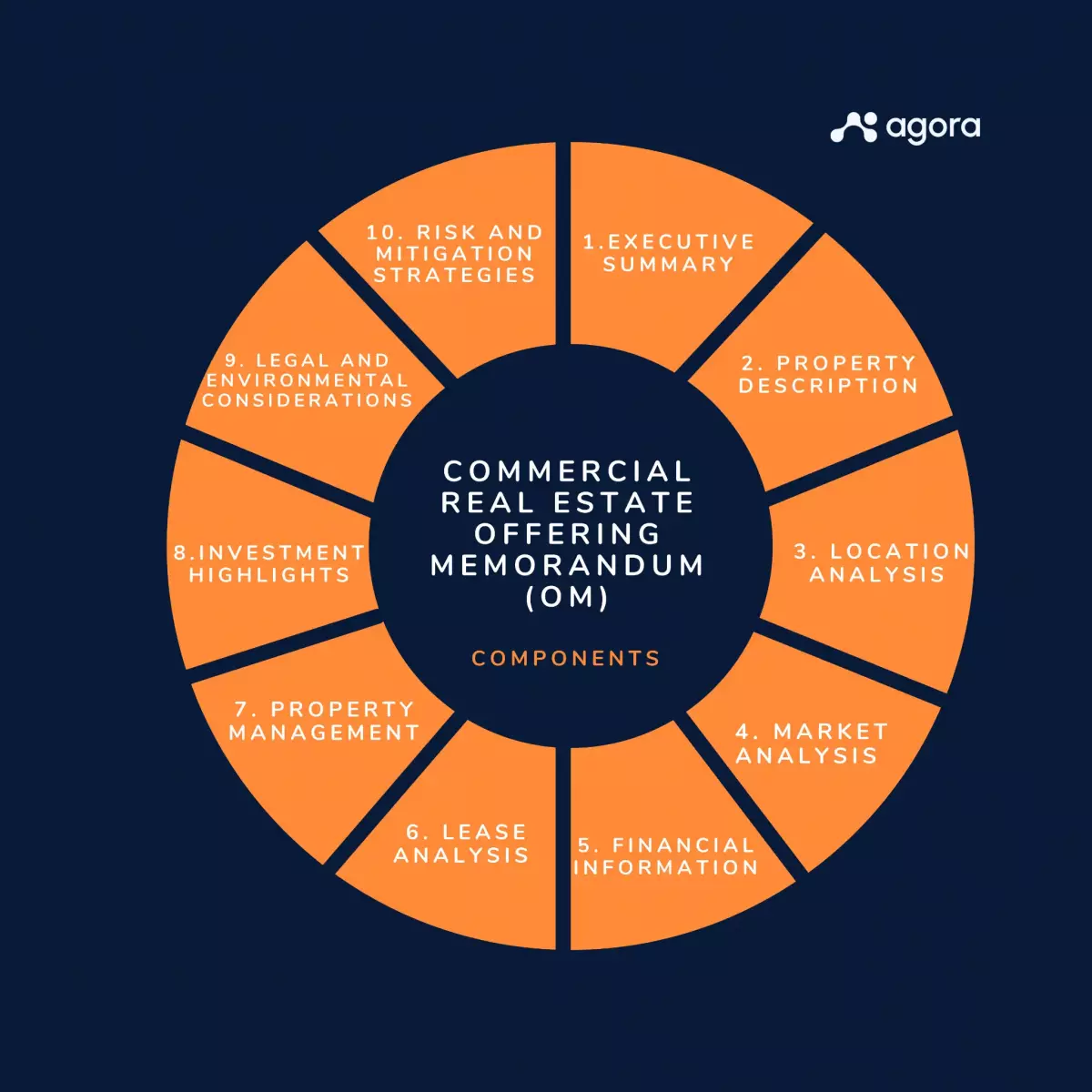If you're involved in the commercial real estate business, chances are you're familiar with the term "offering memorandum" (OM). This document plays a crucial role in generating interest and attracting suitable investors or buyers. While brochures and flyers serve a broader community, a well-crafted OM provides potential stakeholders with detailed information to evaluate the property's financial performance, market potential, and suitability for investment objectives.
Understanding the Commercial Real Estate Offering Memorandum
A commercial real estate OM is a vital document that offers comprehensive insights into a property being offered for sale. It serves as a starting point for conducting due diligence and provides potential buyers or investors with the necessary information to evaluate the property's suitability for their investment goals. Sharing this document typically requires a confidentiality agreement.
The Importance of a Commercial Real Estate Offering Memorandum
An offering memorandum is essential because it provides:
-
Detailed Property Information: The OM gives an overview of the property, including its physical characteristics, location, zoning regulations, lease details (if applicable), financial performance, and potential risks or opportunities.
-
Financial Analysis: It includes financial data such as historical and projected income and expenses, rent rolls, occupancy rates, and potential return on investment (ROI).
-
Market Analysis: The OM provides an analysis of the local real estate market, including supply and demand dynamics, rental rates, vacancy rates, and trends that may impact the property's value.
Structure of a Commercial Real Estate Offering Memorandum
The structure of a commercial real estate OM can vary, but it generally includes the following sections:
-
Executive Summary: This section provides an overview of the property and its key features.
-
Property Description: It offers a detailed description of the property, including size, layout, construction type, amenities, and recent renovations or upgrades.
-
Location Analysis: Focuses on the property's location and advantages, such as proximity to transportation hubs and future development plans.
-
Market Analysis: Provides an analysis of the local real estate market, including trends, supply and demand dynamics, rental rates, and vacancy rates.
-
Financial Information: Details the property's finances, including historical income and expenses, rent rolls, occupancy rates, and operating costs.
-
Lease Analysis: If the property has existing leases, this section provides lease agreements, terms, tenant profiles, and any associated risks.
-
Property Management: Outlines the property management arrangements, including the management team's experience and whether the property is professionally or self-managed.
-
Investment Highlights: Emphasizes the property's potential for income generation and capital appreciation.
-
Legal and Environmental Considerations: Highlights zoning regulations, environmental assessments, permits, or any pending legal litigation that could affect the property's value or operations.
-
Risk and Mitigation Strategies: Identifies and discusses potential investment risks associated with the property and outlines strategies to mitigate them.
The OM may also include appendices with additional supporting documents like property photos, maps, floor plans, legal documents, and tenant profiles.
Writing a Commercial Real Estate Offering Memorandum
To effectively communicate the value and investment potential of the property in your OM, follow these five best practices:
-
Know your audience: Understand the readers of your OM, whether they are individual investors, institutional buyers, or real estate professionals.
-
Highlight unique selling points: Emphasize location advantages, favorable lease terms, or strong tenant profiles as unique selling points.
-
Conduct thorough market analysis: Provide an accurate assessment of the property's current conditions and future prospects. Include data on supply and demand dynamics, rental and vacancy rates, and market trends.
-
Present financial information: Incorporate historical data such as income and expenses, rent rolls, and occupancy rates to help potential buyers make informed decisions.
-
Use visuals and graphics: Enhance the visual appeal of your OM by incorporating property photos, maps, and graphs.
Remember to maintain a professional tone, edit and proofread your OM before distribution, and ensure compliance with regulations, especially if soliciting investment funds.
Best Practices for Reviewing and Proofreading the Offering Memorandum
Reviewing and proofreading your OM is crucial to ensure accuracy, clarity, and professionalism. Follow these best practices during the review process:
-
Review for structure and flow: Ensure information is presented in a logical sequence.
-
Check for accuracy: Verify all facts, figures, and data presented in the document.
-
Proofread the document: Look for grammar, spelling, and punctuation errors.
-
Use clear and concise language: Avoid technical terms and jargon unfamiliar to readers.
-
Seek input from others: Another set of eyes can help catch errors that may have been overlooked.
Once you've reviewed your OM, conduct a final check to ensure all changes and edits are correctly implemented, and references and citations are accurate.
 Steps for reviewing and proofreading the Commercial Real Estate Offering Memorandum (OM)
Steps for reviewing and proofreading the Commercial Real Estate Offering Memorandum (OM)
Conclusion
Crafting a well-constructed and well-written commercial real estate OM is instrumental in marketing the property to potential investors and buyers. By following these best practices and tips for commercial real estate investment, you can ensure the suitability of buyers and sellers, increasing the likelihood of a successful transaction.
![What is a commercial real estate offering memorandum [guide]](https://saigonintela.vn/uploads/images/blog/admin/2024/01/15/what-is-a-commercial-real-estate-offering-memorandum-guide-1705323692.webp)











